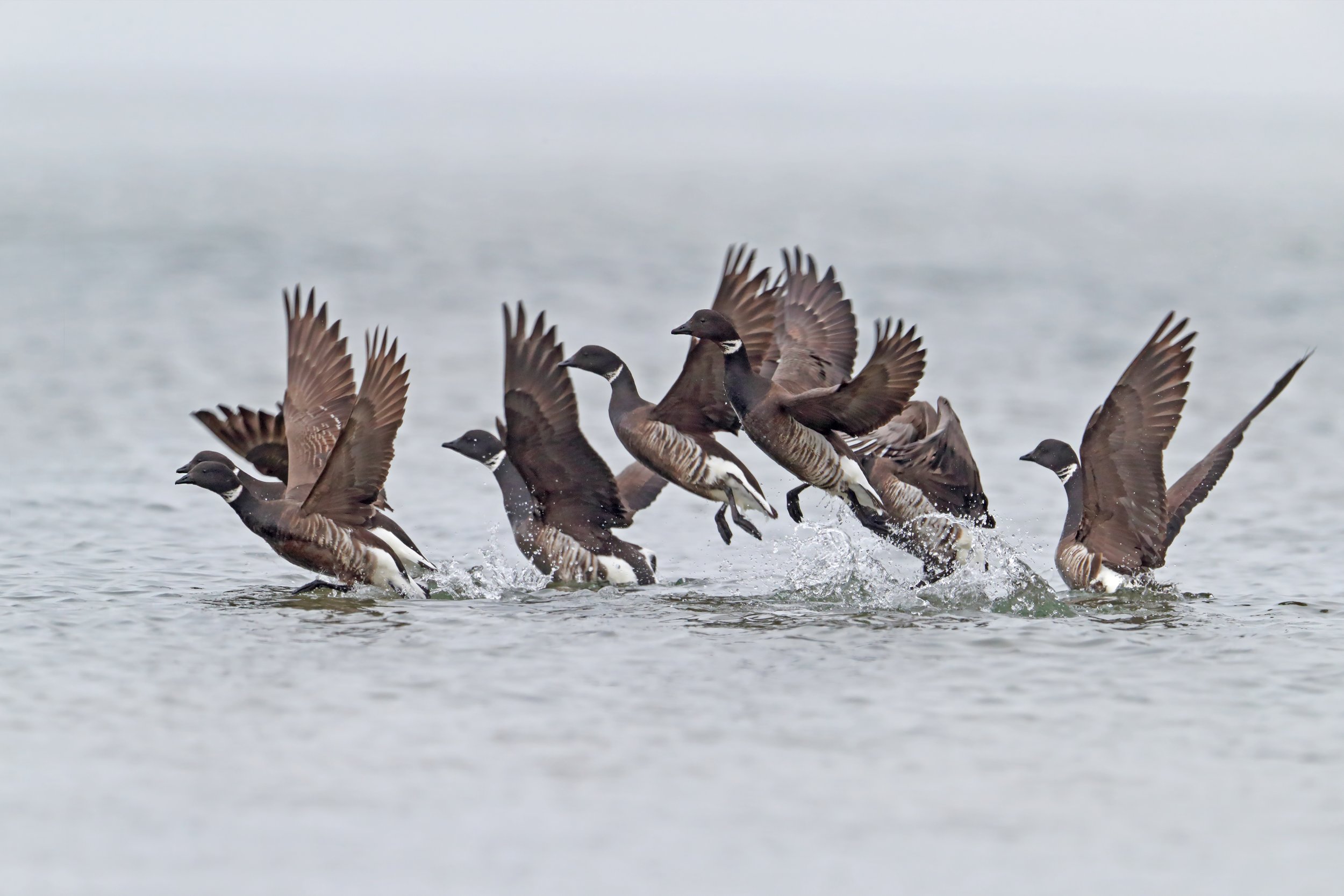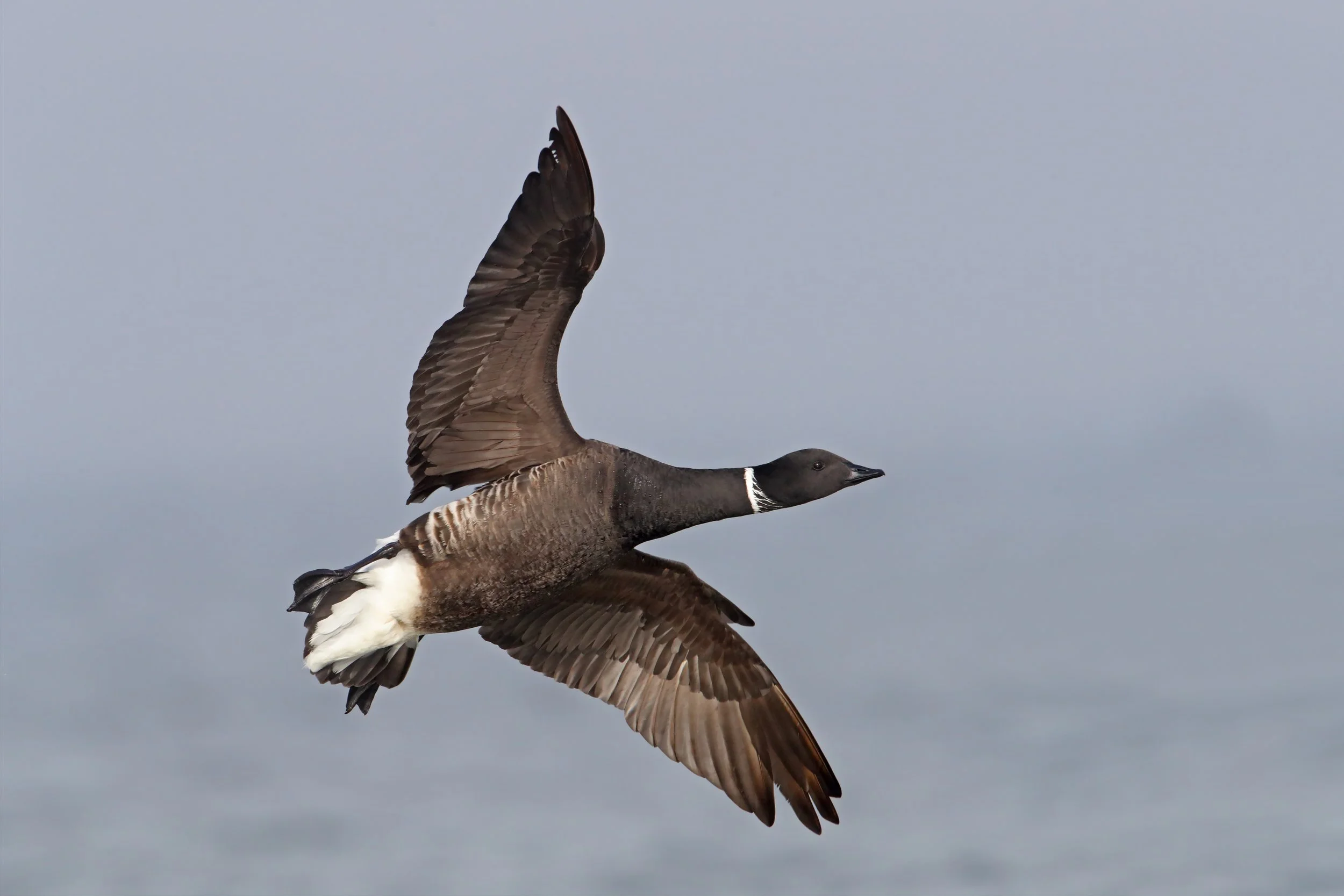Pacific Black Brant: The Migrating Wonder
Shawn Swearingen for SPLIT REED
Photos Courtesy of Gary Kramer
Reading the words of the cold and salty wind-blown rain with the Black Brant that rode the gusts along the hard Pacific coast by hunters decades gone by, caught my attention. Hearing photographer Gary Kramer mention his early research on them during podcast interviews about his Waterfowl of the World gave me the opportunity to discuss them firsthand.
Despite their comparatively small stature and fewer numbers than Canada geese, Black Brant [of the Pacific Flyway] is a beloved gunning bird as well as table fare. For Dr. Chris Nicolai of Delta Waterfowl who studied Black Brant for his Master's and Doctorate degrees, “They are tied at number one for me as the top tasting waterfowl.” Additionally, Black Brant is also known in the waterfowling and birding community for the lengthy migration every Fall. Moving south from the breeding grounds across the Arctic to stage in Cold Bay, Alaska. Here they fatten up on eelgrass in order to make their non-stop flight to Mexico for the winter.
Before Gary Kramer started his career as a wildlife biologist and refuge manager with the U.S. Fish and Wildlife Service, he earned his Master’s degree in wildlife biology by studying Black Brant in Mexico during the winter months of 1974-1975 and 1975-1976. Based in San Quintin Bay of Baja, he gathered baseline information, performed routine number counts, when the populations arrive and leave, as well as the hunting pressure and harvest, and which areas the brant used.
Before the first winter, he was introduced to Robert Jones who was the refuge manager at Izembek National Wildlife Refuge in Cold Bay, Alaska at the time. Cold Bay also housed a U.S. Air Force radar station. Jones proposed to tell Gary when they took off, the heading/direction with the help of the radar station. “This was a time when there was no such thing as radio telemetry. Before there were internet and cell phones for communications. There weren't even reliable telephone landlines where I was in Baja. So, Robert Jones would have to send an old-style Western Union telegram with the information to the local pharmacy,” Gary recalled. While in Mexico that second winter, Gary would stop by the pharmacy to check if there was a telegram waiting for him after doing his observations at San Quintin Bay.
“Then one day in early November it was there. An old ticker-tape telegram that read: ‘Brant exodus of major proportions. Be on the lookout. Signed Bob Jones.’ By the time they arrived in the bay, by the calculations, it was about 60 hours. They traveled 3,000 miles in 60 hours, averaging about 50 miles per hour. This has been substantiated over the years by other biologists,” Gary said.
Roughly ten years later, Gary had the opportunity to go back to San Quintin Bay with biologists from Alaska. This time to do research on the physical conditions of the Black Brant when they arrived, via hunting and sampling 100 birds. As soon as the Brant started their migration en masse, the biologist left Cold Bay for San Diego, California where Gary met him at the airport. From there they drove south to San Quintin Bay where their decoys and blinds awaited the Brant when they arrived. Through the samplings of fat, they found the birds lost as much as 30% of their body fat on their journey south. The average is roughly 15%. All of this loss comes from their non-stop 60-hour flight.
The birds that make the journey south disperse around parts of Mexican Baja and the ‘old’ mainland Mexico coast. In the Spring, rather than make one big push to go north, they will gather once again in San Quintin Bay by late March and leapfrog their way up the Pacific Coast stopping in bays to rest and feed. However, there has been a gradual change in migration numbers over the decades. According to Dr. Nicolai, a third of the Black Brant population (roughly 70,000) is staying in Cold Bay. Winters not being as hard in that part of Alaska and plenty of eelgrass are reason enough for them to stay.
Another change that has developed is in the breeding distributions of Brant. The Y-K Delta has witnessed an 80-85% drop in the historical numbers of birds nesting there while the mid-winter population count of Brant has remained stable. So where are they breeding? “Data is almost suggesting that the areas seeing an increase in nesting are happening somewhere in the magical Arctic. Then, perhaps those being raised are the ones staying the winter in Izembek,” is one hypothesis from Dr. Nicolai. When a hen is mature enough for nesting, which takes until at least 3 years old, she will continue to return and nest in that area for the rest of her life. So the juveniles [less than 3 years of age] are free to find suitable summer/nesting habitats. “The North Slope has seen a double and even triple of those nesting but is a small percentage to those nesting in the Y-K Delta.
While the Black Brant is a ‘unicorn’ pursuit for many waterfowlers, they are also scientific ‘unicorns’ for those biologists looking to solve some of the questions about their habitat and the changes affecting them.
For more Split Reed Original Content click here.



